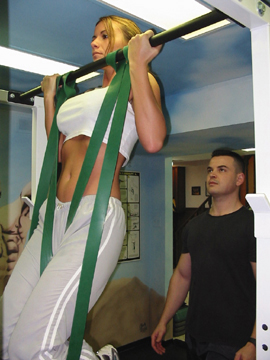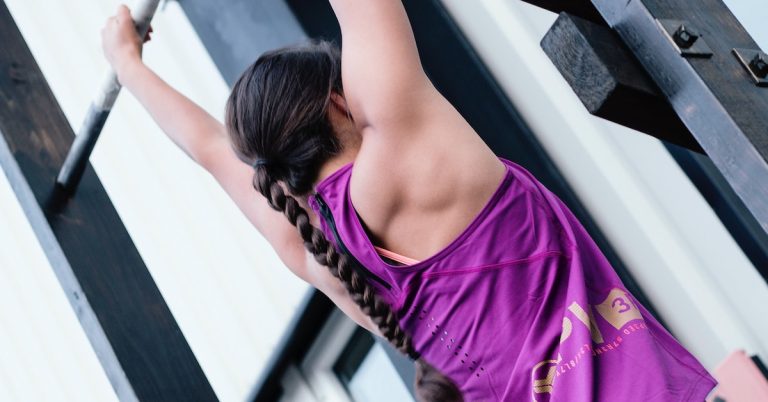Thanks to contributions from Louie Simmons and Dave Tate, two coaches who are renowned for producing world-caliber strength athletes, the concept of accommodating resistance utilizing bands and chains has been popularized over the past two decades.
Since an ascending strength curve exists on exercises like the

Conversely, bands can also offer assistance. This is particularly useful for those who have difficulty performing chin-ups or dips, as is the case with many beginners, females, and overweight individuals. Simply wrap the band around the bar on one end and your knee or foot on the other end.
The bands act like an extra set of tendons and are valuable for those experiencing joint problems – in addition to the added security they offer, the bottom range tends to be less stressful on the joints, particularly the shoulders.
You can alter the assistance by using bands of different sizes (wider bands provide greater assistance), or make the exercise more challenging by slowing down the eccentric action and reducing the plyometric effect. Progress from two bands (easier) to one band (more difficult) as strength increases.
References
- Berry, M., and Ebben, B. (2001). Free weight variable resistance. In StrengthCats. Retrieved from http://strengthcats.com/variableresistance.htm
- Tate, D., and Siff, M.C. (2000, November). Supertraining and Westside strength camp. Seminar presented in Denver, CO.
- Thibaudeau, C. (2004). Theory and application of modern strength and power methods. Quebec: n.p.
- Siff, M.C. (2000, October). Applied science in conditioning for rehabilitation and performance. Seminar presented in Mississauga, ON.

Fill in Your Upper Chest with This Novel Exercise
Achieving a well-balanced and aesthetically pleasing chest can be a challenge, especially when it comes to targeting the often elusive

Elevate Your Core Training: Advanced Hanging Leg Raise Techniques
Hanging leg raises stand as a cornerstone in core training, particularly beneficial for athletes, as they target the lower abdominal

The Periodization Blueprint for Chin-Ups and Pull-Ups
Exciting news! Just got my hands on Swissies45, and they’ve transformed my chin-up game. No more draping an EZ-Curl bar
follow
Error: No feed with the ID 2 found.
Please go to the Instagram Feed settings page to create a feed.
